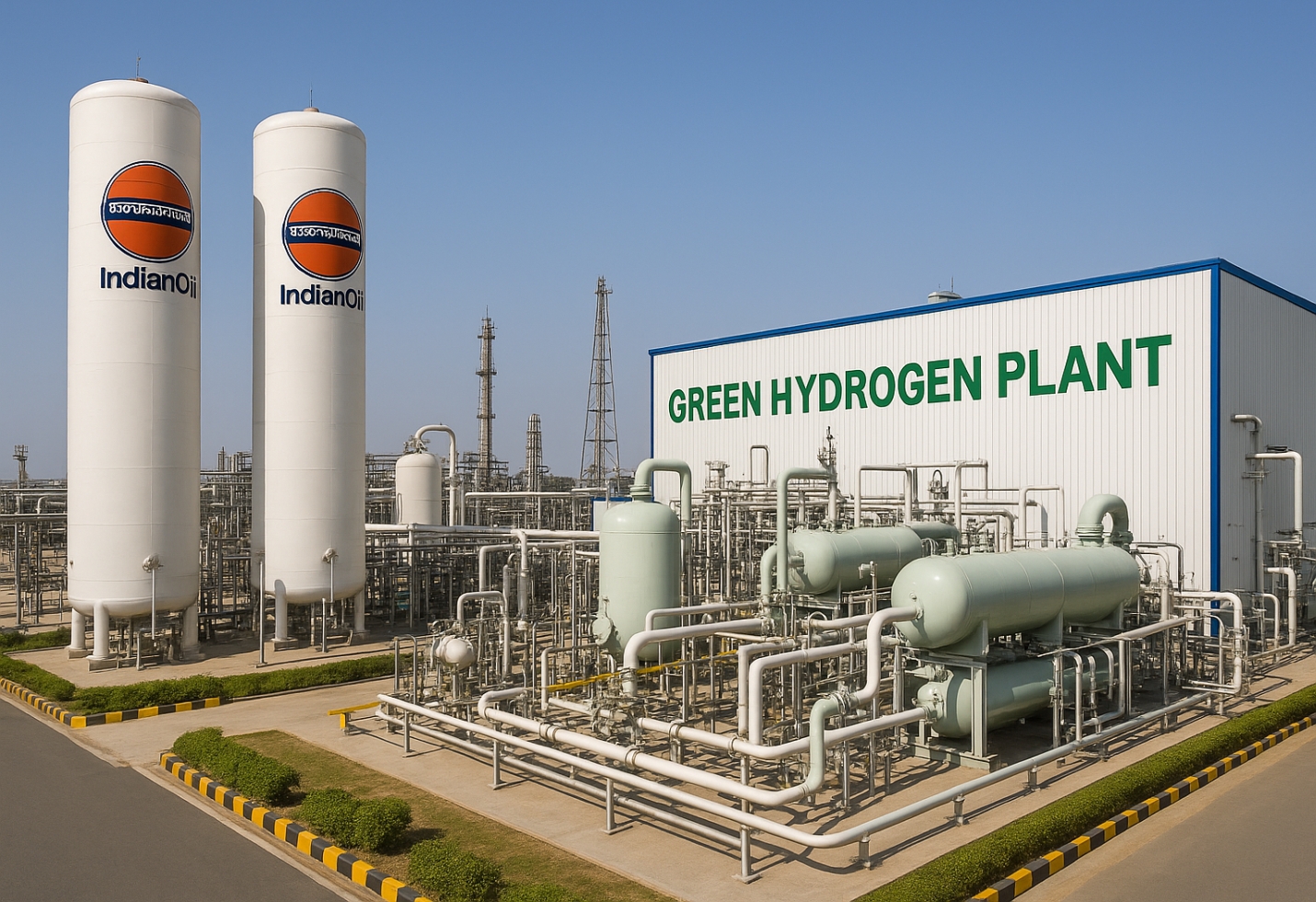Indian Oil Enhances Panipat Refinery for Aviation Fuel
In a significant move towards achieving net-zero goals, Indian Oil Corporation plans to upgrade its diesel desulphuriser unit at the Panipat refinery. This upgrade aims to generate 30,000 metric tons of sustainable aviation fuel (SAF) each year from recycled cooking oil, alongside inviting proposals for SAF and green hydrogen initiatives.
Summary:
Indian Oil Corporation (IOC) is temporarily shutting down its Panipat refinery’s diesel desulphuriser unit to upgrade it for producing 30,000 metric tonnes of Sustainable Aviation Fuel (SAF) from used cooking oil. This move supports India’s clean energy goals and the aviation industry’s push for carbon-neutral flying. IOC will also invite tenders for a green hydrogen plant and additional SAF capacity at the site.
Indian Oil’s Green Turn: Retrofitting for the Future
Indian Oil Corporation Ltd. (IOCL), the leading energy company in the country, is making significant strides to reduce carbon emissions in India’s aviation industry. The firm has revealed that it will temporarily close its diesel desulphuriser unit at the Panipat refinery in Haryana for a comprehensive upgrade, which is intended to initiate the production of Sustainable Aviation Fuel (SAF).
The Panipat refinery, with a capacity of 300,000 bpd, is a vital asset for IOCL and will play a significant role in India’s emerging SAF landscape following its upgrade.
Why Sustainable Aviation Fuel?
Sustainable Aviation Fuel (SAF) is a biofuel that has a chemical composition resembling traditional jet fuel, but it offers a much smaller carbon footprint. The production of SAF from non-fossil sources like used cooking oil, municipal waste, or agricultural residues can reduce lifecycle greenhouse gas emissions by up to 80% compared to conventional fossil jet fuel.
According to global studies and IATA guidelines, adopting Sustainable Aviation Fuel (SAF) is key to achieving net-zero aviation emissions by 2050. India’s rapidly growing civil aviation sector is ideal for large-scale SAF integration.
The Panipat Transformation: Transitioning from Diesel to Eco-Friendly Jet Fuel
According to Indian Oil officials, the retrofitting of the diesel desulphuriser unit will allow the facility to produce 30,000 metric tonnes of SAF annually. This SAF will be derived from Used Cooking Oil (UCO), a waste material abundant in urban households and restaurants.
This aligns with the government’s broader push under the National Bio-Energy Programme and waste-to-energy initiatives. Indian Oil had earlier piloted a used cooking oil collection initiative in several cities, which now finds a downstream application in SAF production.
The temporary shutdown will enable Indian Oil to install advanced equipment for producing sustainable aviation fuel (SAF) using Hydroprocessed Esters and Fatty Acids (HEFA) technology from used cooking oil.
Green Hydrogen and SAF Bids to Be Invited
Beyond upgrading the current unit, IOCL is taking the green transition further by inviting tenders for two major projects:
A Green Hydrogen Plant – in line with India’s National Green Hydrogen Mission, this plant will produce hydrogen via electrolysis powered by renewable energy. This clean hydrogen can be integrated into various refinery processes or offered as fuel for heavy transport.
A Full-Scale SAF Production Facility – in addition to the retrofit, IOCL is eyeing a standalone SAF production unit at Panipat, which will likely be much larger in capacity and may explore feedstocks beyond UCO, such as agricultural waste or algae-based oils.
These projects are expected to attract domestic and international clean energy investors and technology providers. Indian Oil is expected to call for global bids before the end of this quarter.
Strategic and Environmental Impact
This shift by IOCL marks a critical juncture in India’s energy transition. While refining remains core to Indian Oil’s operations, the company is actively diversifying into renewable energy, biofuels, EV infrastructure, and now green hydrogen and SAF.
Key Implications:
Decarbonization of Aviation: The project will directly contribute to lowering the carbon footprint of Indian airlines, especially for international routes, seeking to meet global sustainability compliance.
Circular Economy Boost: By sourcing UCO from households and restaurants, the project encourages sustainable waste management and additional income streams for small-scale collectors.
Employment and Innovation: The SAF and green hydrogen projects are expected to generate high-skilled jobs and drive technology innovation in bio-refining.
Alignment with Government and Global Goals
This initiative is in harmony with several government missions and international agreements:
National Green Hydrogen Mission – launched with an initial outlay of ₹19,744 crore, aiming to make India a global hub for green hydrogen.
SATAT Scheme (Sustainable Alternative Towards Affordable Transportation) – supporting bio-CNG and other clean fuel alternatives.
India’s COP26 commitment is to reach net zero by 2070 with interim targets by 2030.
It also places Indian Oil in alignment with the International Civil Aviation Organisation (ICAO) and IATA recommendations for blending SAF into commercial aviation fuel supplies.
Industry Outlook: A Growing SAF Market
Globally, the SAF market is projected to grow from around $1.1 billion in 2022 to over $10 billion by 2030, fueled by tightening emissions regulations, rising jet fuel prices, and increased airline commitments to net-zero goals.
In India, the SAF sector is still in its infancy. Indian Oil’s Panipat initiative can act as a springboard, encouraging other oil majors like BPCL and HPCL to follow suit. Private sector refineries and global clean energy players may also enter the fray, either independently or through PPP models.
Conclusion
Indian Oil Corporation’s decision to repurpose and upgrade a core refinery unit for SAF production is more than just a technical enhancement—it signals a strategic realignment with India’s and the world’s clean energy future. By utilising waste like used cooking oil to power aircraft, and pairing that with green hydrogen infrastructure, IOCL is not only safeguarding its business future but is actively shaping the country’s energy narrative.
This transformation from black gold to green fuel demonstrates the evolving role of oil companies in a carbon-conscious world and marks a defining milestone for India’s energy transition journey.
:
The image added is for representation purposes only





